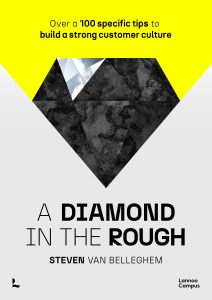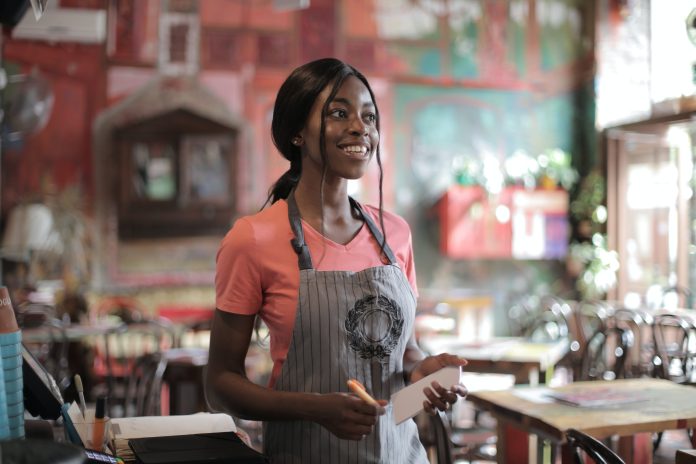By Professor Steven van Belleghem, below, a world-leading expert in customer experience
 Lots of pieces focused on business trends in 2024 will inevitably focus on emerging technologies, such as artificial intelligence. While these are, of course, worrying for some smaller businesses owners, I believe that there is actually an opportunity to improve how they help customers.
Lots of pieces focused on business trends in 2024 will inevitably focus on emerging technologies, such as artificial intelligence. While these are, of course, worrying for some smaller businesses owners, I believe that there is actually an opportunity to improve how they help customers.
Try personalisation at scale
Social media and the tech giants have been personalising content and communications for years, but it has been harder for small businesses to do the same. Generative AI for enterprises now basically allows every type of company to personalise their content, marketing and customer interactions, fast, in a relevant manner and at very large scale.
Value the humans in your customer service
We have seen how technologies like OpenAI’s ChatGPT are becoming increasingly skilled at adding a “human touch” to the conversation with customers. However, empathetic humans with high emotional intelligence will become increasingly valuable to solve the customer problems that are still too complex for the smart systems to solve.
Sensitive and compassionate human problem solvers will always remain essential to solve the emotional, complex and unique questions and needs of customers – and this provides a big opportunity for smaller businesses to offer an outstanding service.
Embrace effective empathy
Whether you’re a global brand or a small business, every company receives unexpected questions and feedback from their customers. What makes the great CX companies stand out from the mediocre (or bad) ones is how fast they turn these data or ideas into action. I like to call it “effective empathy” – companies that can understand and act on what their customers say quickly and effectively.
The only way to excel at this kind of effective empathy is by creating processes to turn feedback into action. At Atlantis The Palm hotel, for example, they have regular customer experience meetings to report new questions and situations. They divide feedback into two categories: (1) questions they do not have an existing process for, but which could apply to many customers, (2) questions they do not have a process for but are so specific that they have no value for other customers. Could you try treating customer feedback and questions the same way in your business, to see how many more customers you could be helping?
Think about customers’ life journey
Many companies invest huge sums of money to map out their customer journey to optimise their own sales, marketing and service processes. However, outstanding companies today concentrate on their customer’s life journey, and how they can help customers tackle life frustrations by offering really useful services and experiences..
Look at opportunities in “Preloved”
For the last few years, the secondhand market has been growing exponentially, for both economic and ecological reasons. In 2022, the global market value of secondhand and resale apparel was estimated to be worth 177 billion U.S. dollars, and is projected to almost double a value of 351 billion dollars by 2027 – making it a really attractive market for smaller businesses too.
Many brands are jumping on that “preloved” boat. One of my favorite stories has to be that of Filou & Friends, a Belgian children’s clothing brand. Because they produce high-quality sustainable and recyclable products, their clothing has a long lifespan resulting in a lower impact on the environment. But they also decided to take that approach one step further with the introduction of the Filou Forever brand. Customers are encouraged to return garments to a Filou & Friends shop when they no longer have a use for them. If the garment passes the Filou & Friends quality control exam, the customer receives a partial refund of its purchase price in the form of a voucher to buy new garments and the pre-worn quality-controlled product is added to the Filou Forever collection. People with modest means are then able to buy high-quality beautiful and durable clothing for their children.
Become a friction-hunter boss
When you’re the head of a business, it is easy to become slightly removed from your customers, to the point that you no longer know what’s important to them. That’s why I love the latest trend of CEOs of some of the world’s most famous brands dedicated time to trying out their own products and services to become more in touch with their hopes, wants and needs.
Brian Chesky, the CEO of Airbnb, for instance, recently spent six months living on the premises that he’s been renting out through his own platform. Starbucks CEO Laxman Narasimhan works one half-day a month as a barista, to become immersed in the Starbucks customer culture. Uber CEO Dara Khosrowshahi got behind the wheel as a driver and went through the entire process himself, from signing up as a driver to driving customers and dealing with app glitches and traffic.
These are all fantastic examples of what I call “friction hunting”, where employees and decision makers go out into the field to look for small frictions and then solve them in a manageable way. It is an interesting lesson to keep in mind as your small business grows.
 Prof. Steven van Belleghem is a world-leading expert in customer experience and best-selling author. His new book, A Diamond in the Rough, is out now.
Prof. Steven van Belleghem is a world-leading expert in customer experience and best-selling author. His new book, A Diamond in the Rough, is out now.


